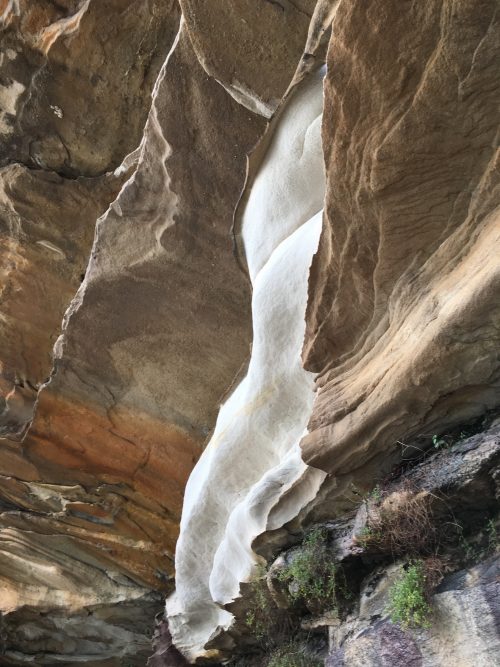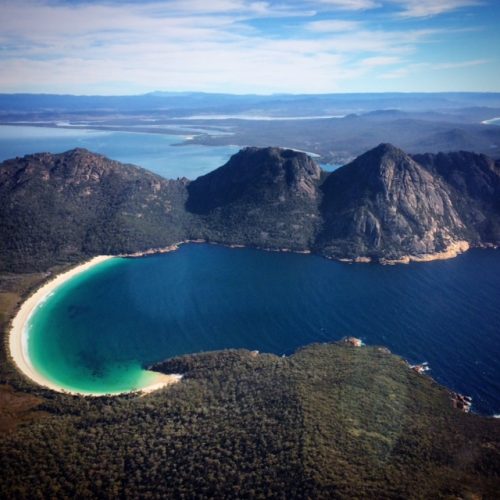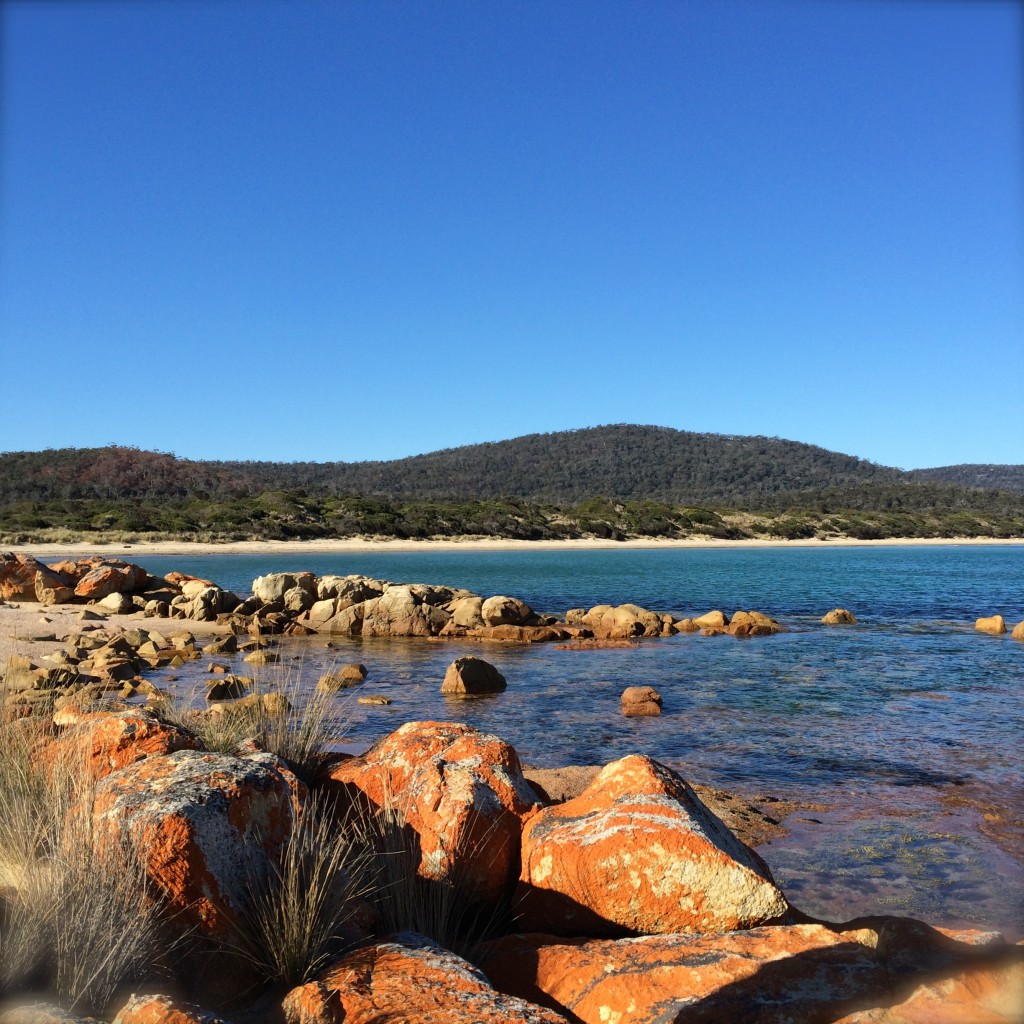 Three hours north of Hobart lies a magnificent peninsula that stretches gracefully in to the Tasman Sea. Its pink granite and feldspar hills rise from cobalt waters and a necklace of coves with white sand beaches. It is a magnificent scenery – majestic, ever changing, pristine. The Freycinet Peninsula is the jewel in the crown of Freycinet National Park. It is said that the air here is the purist on earth, the measurement of purity being measured by the quantity and diversity of lichens that streak the granite.
Three hours north of Hobart lies a magnificent peninsula that stretches gracefully in to the Tasman Sea. Its pink granite and feldspar hills rise from cobalt waters and a necklace of coves with white sand beaches. It is a magnificent scenery – majestic, ever changing, pristine. The Freycinet Peninsula is the jewel in the crown of Freycinet National Park. It is said that the air here is the purist on earth, the measurement of purity being measured by the quantity and diversity of lichens that streak the granite.
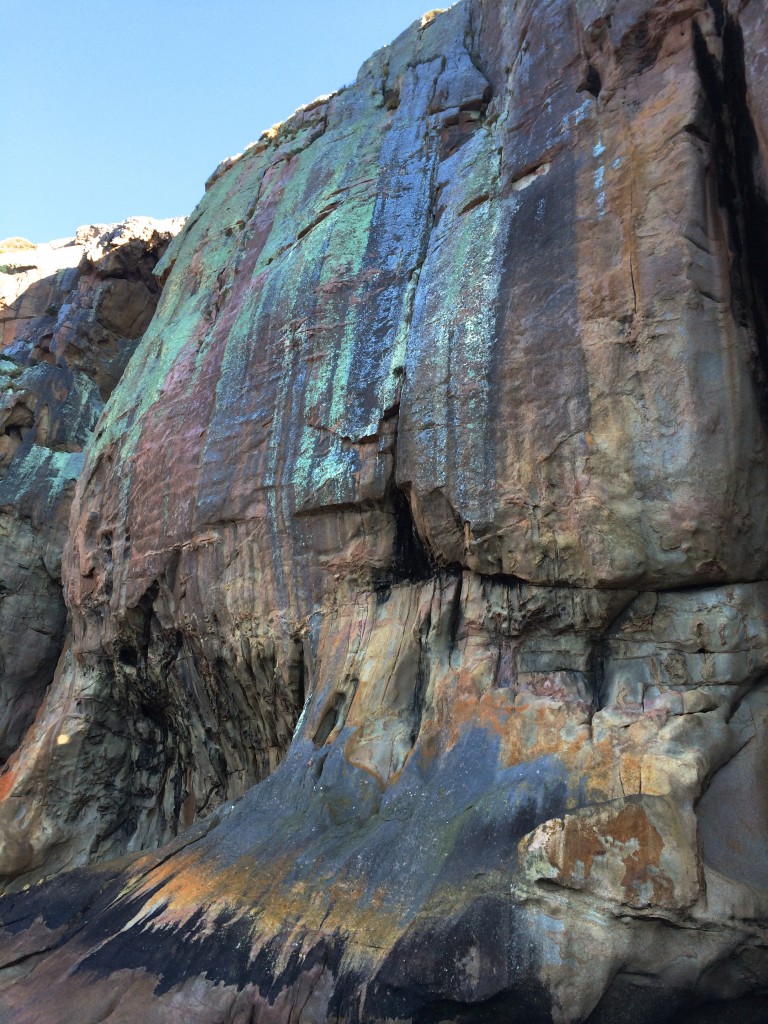
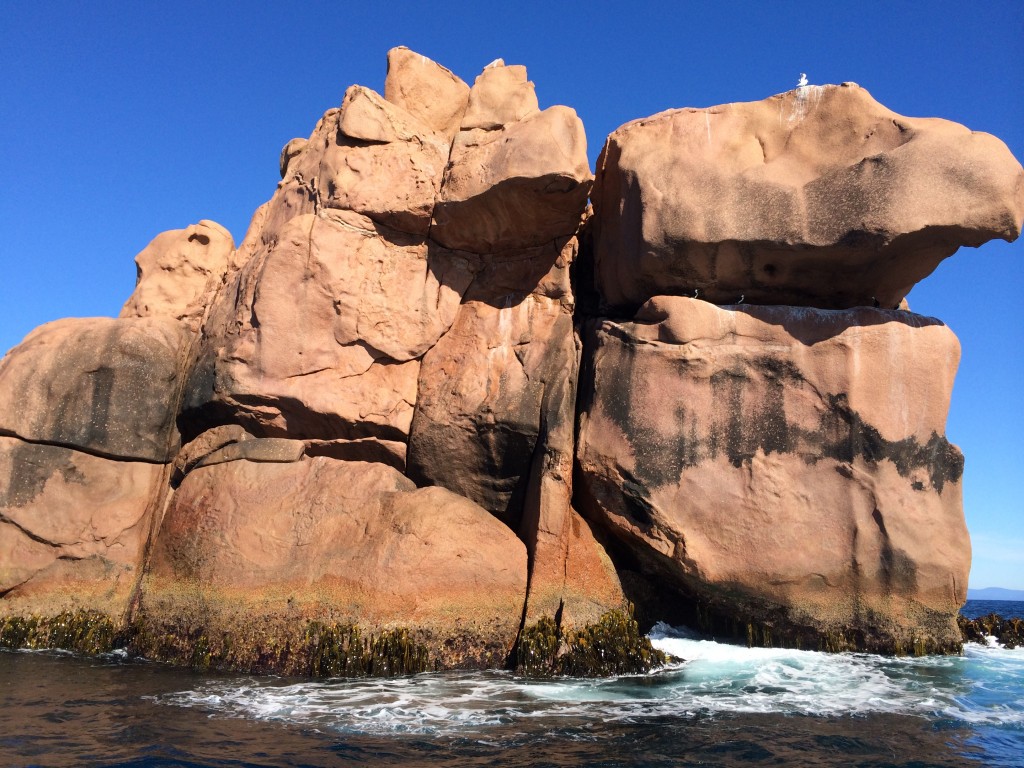
The jewel in the crown of the peninsula is Wineglass Bay, a deep crescent beach of stunning proportions, bleached sand and turquoise water. Nominated the 7th most beautiful beach in the world, it is only accessible by sea or on foot over a saddle in the Hazards, the granite backbone of the peninsula.
 Pressed for time and having spent our one free day at sea (where we saw three humpbacks breaching and tail slapping) and learning about oyster farming in neighboring Moulting Lagoon (where I ate the best oysters ever), we took a 40-minute overflight of the area and circled Wineglass Bay. Cheating, maybe, but I couldn’t leave without this view.
Pressed for time and having spent our one free day at sea (where we saw three humpbacks breaching and tail slapping) and learning about oyster farming in neighboring Moulting Lagoon (where I ate the best oysters ever), we took a 40-minute overflight of the area and circled Wineglass Bay. Cheating, maybe, but I couldn’t leave without this view.
We stayed at Saffire Hotel, a Luxury Lodge of Australia and an architecturally fascinating hotel of 26 suites with a commitment to great food and wine. Tasmania has become a culinary destination, and due to long days and more marked temperatures, its wines now compete with those of the mainland. There is also a recent focus on whiskey production, and those who enjoy trawling the distilleries of the Hebrides may well want to include part of Tasmania’s whiskey trail on a trip to the island.

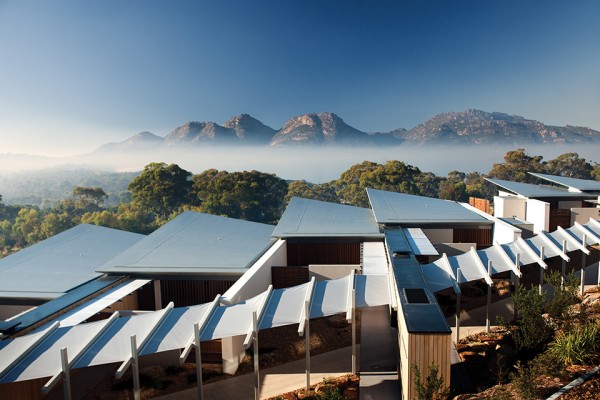
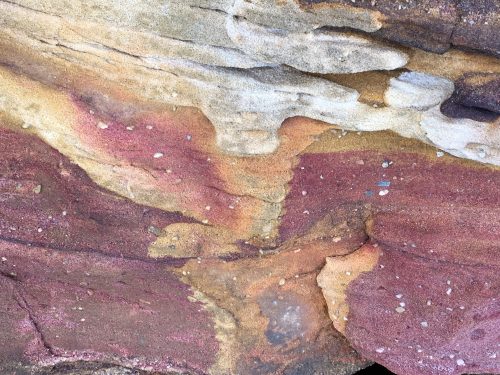
The story of much of Australia is the story of sandstone. Arrive in Sydney and it's all around you - in buildings proud and humble, in the pavement, in its many beaches. It comes in all colors and so the buildings are red and yellow, the beaches white and black, the art - contemporary sandstone sculpture or Aboriginal ochred painting - in all of these hues.
But, while beautiful, sandstone bedrock produces insipid soil and a poor growing environment and so vegetation, wildlife and humans have had to adapt and they have done so in fascinating, and sometimes shocking, ways. A kangaroo doesn't hop but he springs, covering long distances and expending minimal energy. When, in the outback, temperatures rise above certain levels, a kangaroo will eject the joey from her pouch so that her own chances of survival increase. And if rains fail and graze is sparse, a roo can even put her pregnancy on pause until conditions improve.
Similarly, indigenous tree species cannot afford to lose their leaves to herbivores and so they defend themselves with toxins. The many species of eucalyptus emit their oil in a faint blue haze (hence the name Blue Mountains) and provide koalas, with digestive tracts adapted to processing these toxins, their diet.
And, finally, sandstone has played a crucial role in Aboriginal culture. The ancient rock art found etched into soft sandstone tells their stories and provides a map of their relationships with the sky, the land, earth's creatures and with each other. And because the sandstone is so soft, these etchings - some 20,000 years old or more - have been redrawn through time and across country and have survived.
Lesson #2: Everything natural and cultural takes its shape from the rock upon which it lies.
" ["post_title"]=> string(36) "Lessons From the Land Down Under (2)" ["post_excerpt"]=> string(0) "" ["post_status"]=> string(7) "publish" ["comment_status"]=> string(6) "closed" ["ping_status"]=> string(6) "closed" ["post_password"]=> string(0) "" ["post_name"]=> string(14) "lessons-land-2" ["to_ping"]=> string(0) "" ["pinged"]=> string(0) "" ["post_modified"]=> string(19) "2016-11-14 12:20:23" ["post_modified_gmt"]=> string(19) "2016-11-14 17:20:23" ["post_content_filtered"]=> string(0) "" ["post_parent"]=> int(0) ["guid"]=> string(31) "http://lisalindblad.com/?p=5862" ["menu_order"]=> int(0) ["post_type"]=> string(4) "post" ["post_mime_type"]=> string(0) "" ["comment_count"]=> string(1) "0" ["filter"]=> string(3) "raw" } }